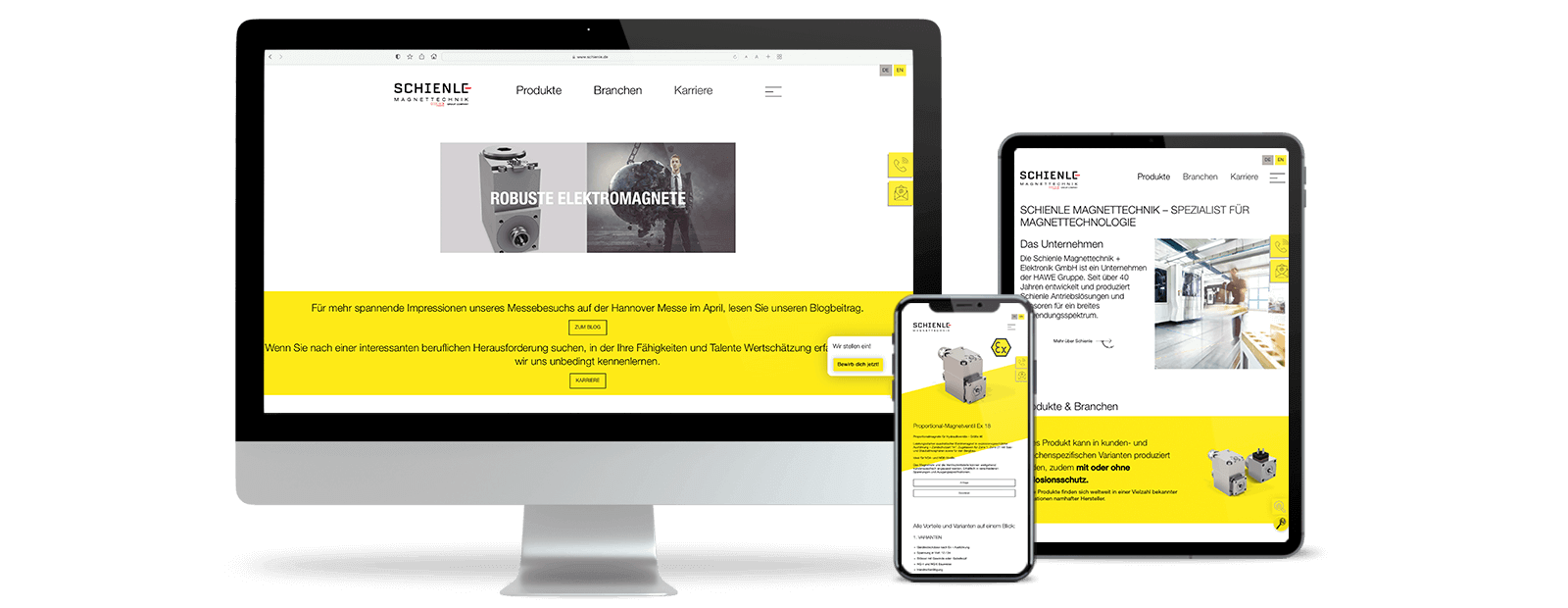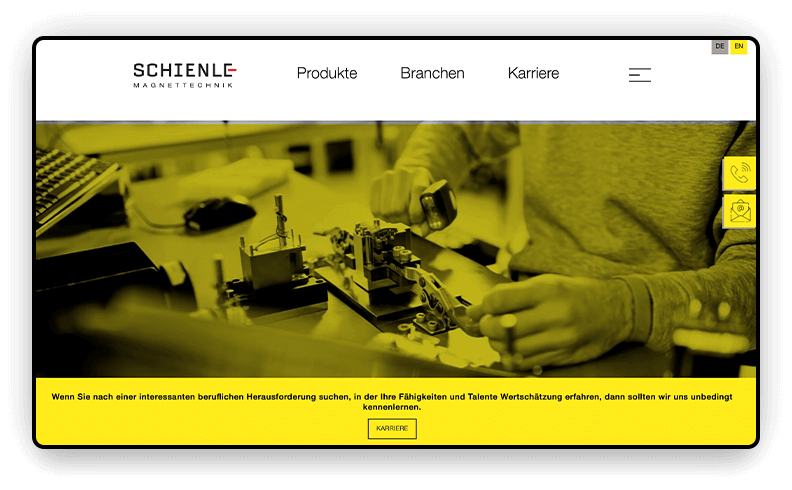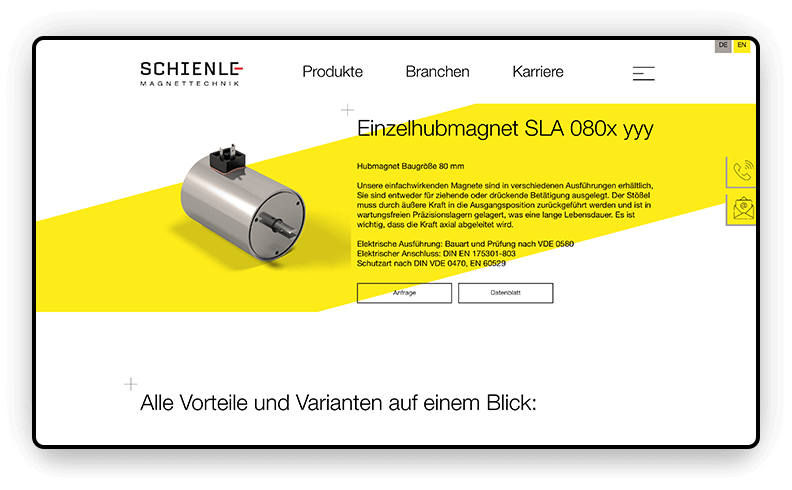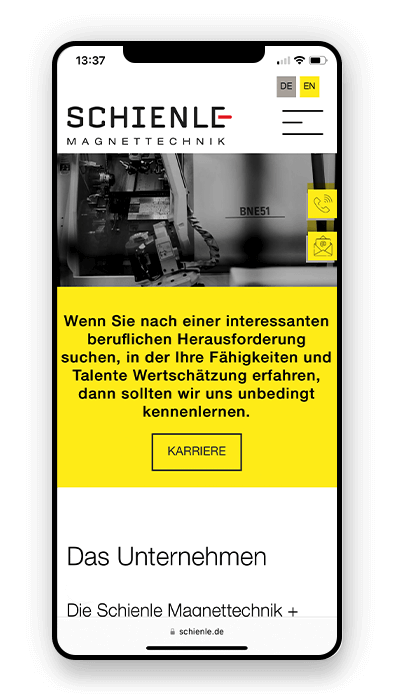i

Die Aufgabe
Planung & Konzeption
UX-Design
Webdesign
Content Management System
Schienle hat uns mit einem Relaunch der Website beauftragt. Die vielseitigen Produkte und Branchen des Unternehmens sollten klar im Fokus stehen. Desweiteren war es unsere Aufgabe den User zielorientiert durch die zweisprachige Website zu leiten, da diese als Referenz und Aushängeschild bei diversen Messeauftritten gilt.
Die Umsetzung
Gemeinsam mit der Marketing-Abteilung von Schienle erarbeitete das Team von KAOS ein aussagekräftiges User Experience Konzept und setzte dieses mit dem vorhandenen WordPress CMS um. Hinzugekommen sind Features wie der Fokus Point auf der Startseite. Durch einen Hover-Effekt haben User nun die Möglichkeit spielerisch die Elemente vom Schienle Produkt zu entdecken und mehr Informationen zu erfahren.
Des Weiteren verfügt die Website nun über eine Produkt-Übersicht, die für die Suchmaschinenoptimierung einen echten Mehrwert bieten. Mit Hilfe von Produktkategorien und Detailseiten konnte eine benutzerfreundliche Menüstruktur erarbeitet werden. Die Detailsseiten umfassen unter anderem Produktdatenblätter zum Download, Anwendungsgebiete, Produkte die den User ebenfalls interessieren könnten und eine direkte Anfrage-Möglichkeit beim Vertrieb.
Neu hinzugekommen sind die Anwendungsbereiche und Branchen. Diese Inhalte optimieren zum einen die Auffindbarkeit im Internet und erleichtern es dem Kunden die Produktvielfalt einzuordnen anhand von passenden Anwendungsbeispielen.
Sie haben Fragen?

Cirilla Lanz
Leitung Web/Digital




